In this color train art lesson, young students will explore the elements of Color Theory while making an adorable, rainbow frame-able choo-choo train. This project covers Common Core Standards for Science, Math, and History for grades K-1 which can be found at the end of the lesson.
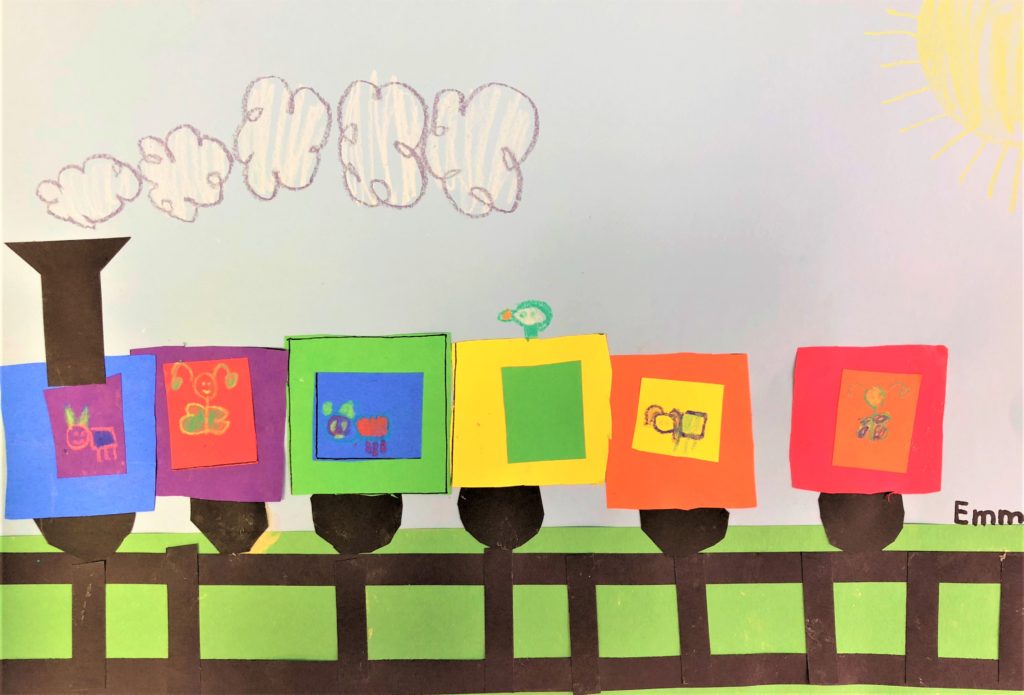
Grade Level
Kindergarten and 1st grades – The examples in this lesson are by Kindergartners
Objective
In this Color Train Art Lesson, students will create a train using the element of design – Color Theory.
Time
6 – 30 min lessons
Materials
- Scissors
- Markers
- Construction Paper Crayons – Crayola Construction Paper Crayons, Assorted Colors, Set of 16
- Sky Blue – SunWorks Construction Paper, Sky Blue, 12″ x 18″, 50 Sheets
- Black – Tru-Ray Sulphite Construction Paper, 12 x 18 Inches, Black, 50 Sheets – 054150
- Festive Green – Tru-Ray Heavyweight Construction Paper, Festive Green, 12″ x 18″, 50 Sheets
- Construction Paper, 9″ x 12″, Pacon Tru-Ray Construction Paper, 9″ x 12″, 10 Classic Colors, 50 Sheets (P103031) red, orange, yellow, festive green, royal blue, purple
Inspiration/Artist
I was inspired to make this lesson from this site: Click Here
Instruction with Questions
Day 1
Begin by reading these one or two fun books. You may read one or two today and save others for a follow up day:
“Mix It Up” by Herve Tullet
“A Color of His Own” by Leo Leoni
The Day the Crayons Quit, by Drew Daywalt
“Babar’s Book of Color” by Laurent de Brunhoff
Next show a few videos.
The Colors Song | The Colours Song | Scratch Garden: Click Here
Sesame Street: OK Go – Three Primary Colors: Click Here
The Color Song: A Funny Song: Click Here
These next two are totally optional depending on your time frame.
Brain Games – Visible Spectrum: Click Here
As a fun end to the day, I have them create the colors with this activity. It only takes a few minutes and is a huge hit!
Use this Color Theory for kids inspired by Disney PowerPoint Presentation: Click Here
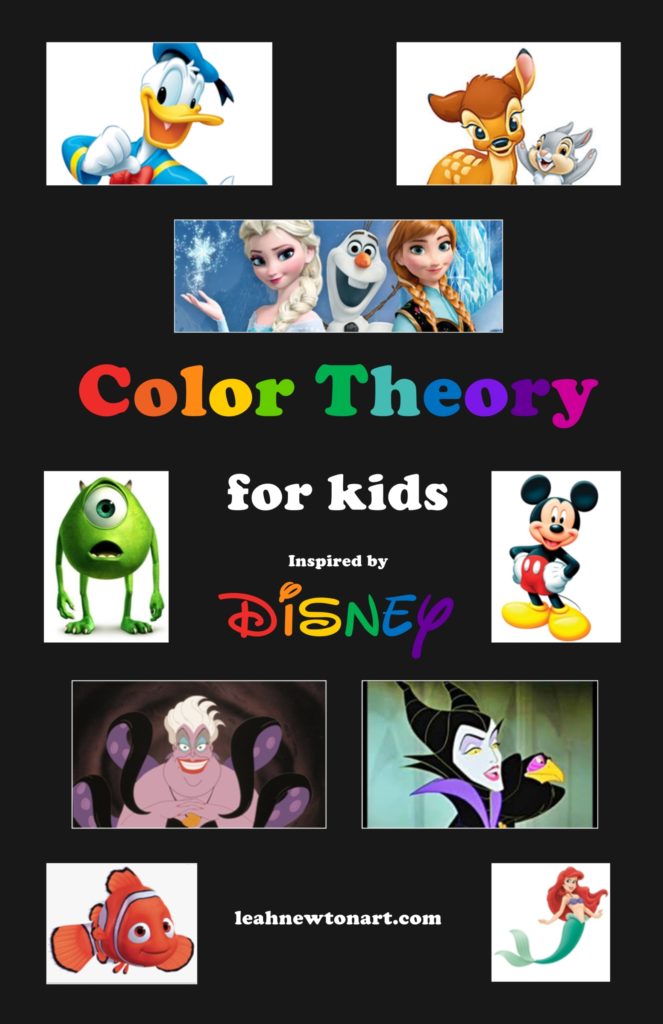
Step 1
Shaving Cream (Dollar Tree) – Hint: Do not put more than maybe a cup worth into a sandwich sized baggie.
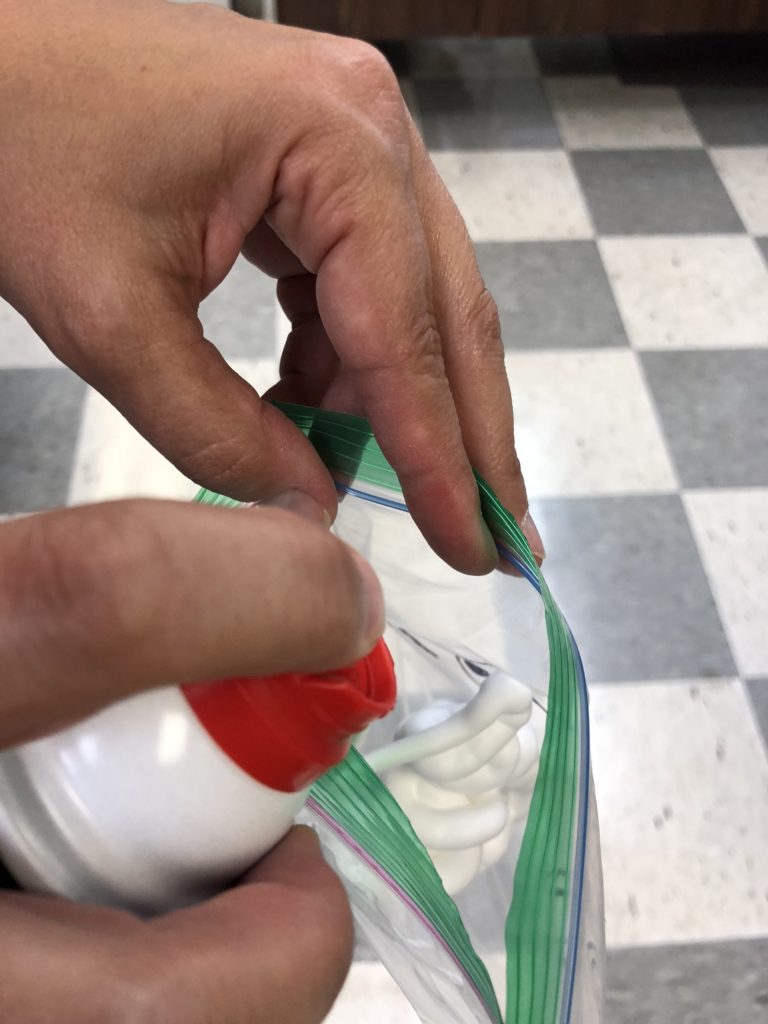
Step 2
Food Coloring – They pick 2 of the three primary colors; red, yellow, blue


Step 3
You can already see the colors mixing which is very exciting! I recommend clearing as much air out of the bag as possible before you zip it closed. This will prevent the bag from popping and shaving cream oozing out. This picture demonstrates the color mixing and the potential for ooze.
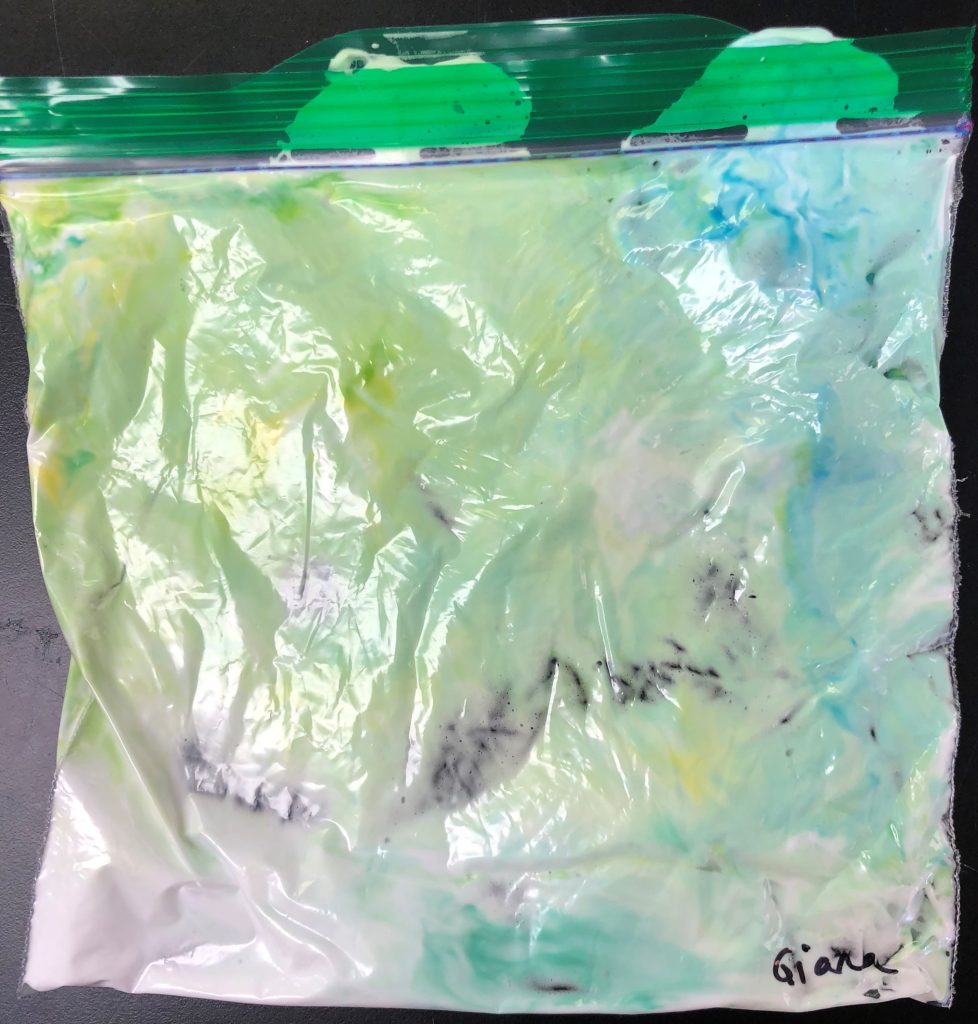
Day 2
I created this power point using Disney characters to reemphasize Color Theory. Ask the students to list at least one Disney character that represents one of each of the types of Color Theory you are learning. Then, show them the power point to really reinforce the vocabulary. Click Here
*Primary
*Secondary
*Complimentary
Day 3
Give the students the large piece of sky blue paper and ask them to glue a three inch wide green strip across the bottom.
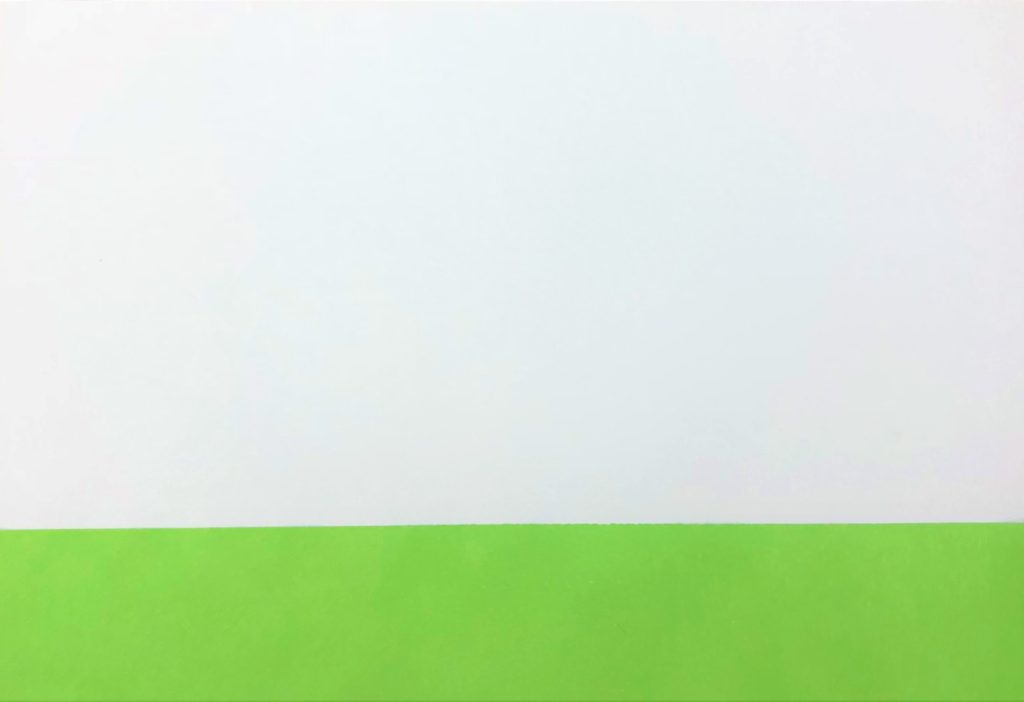
Next, give them three long 1″ thick x 18 inch long black strips cut from your large black paper. Two of the strips are glued inside the green area. I show them how to not put the bottom strip along the bottom of the page, and instead, leave some green showing on either side. The third black strip is cut up into shorter strips and laid between to create the railroad tracks. Depending on the skill set of your class, I show them how to measure the strips on their own and cut them as they go and glue.
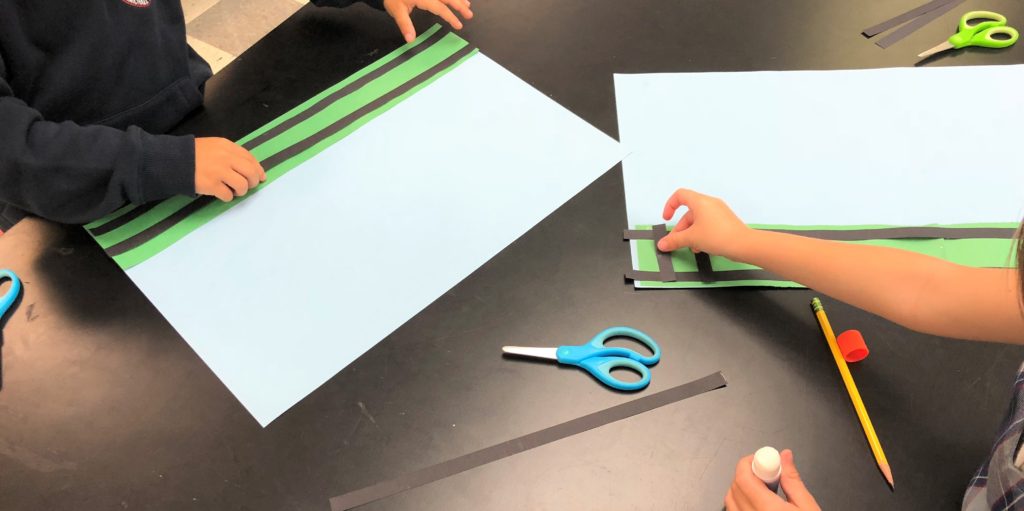
Day 4
Students cut out squares from each of the six colors. I cut down the construction paper to fit into my school copy machine and print from this template Click Here
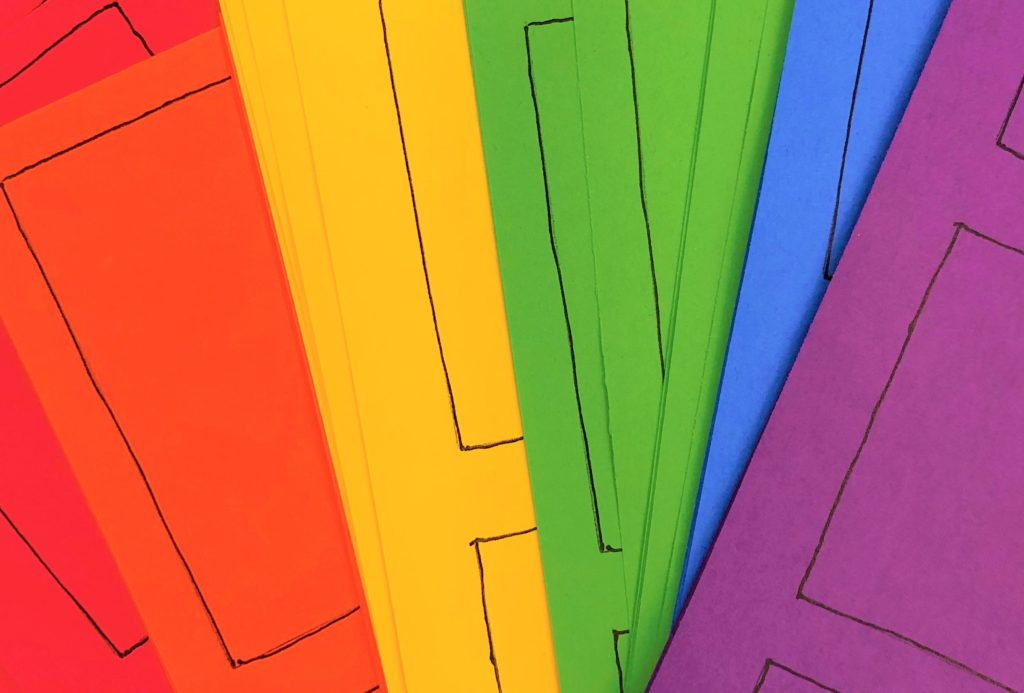
Each child gets one colored square. The rectangles are cut in quarters and each child gets one of each color of that. The little rectangle will fit neatly inside the squares later.
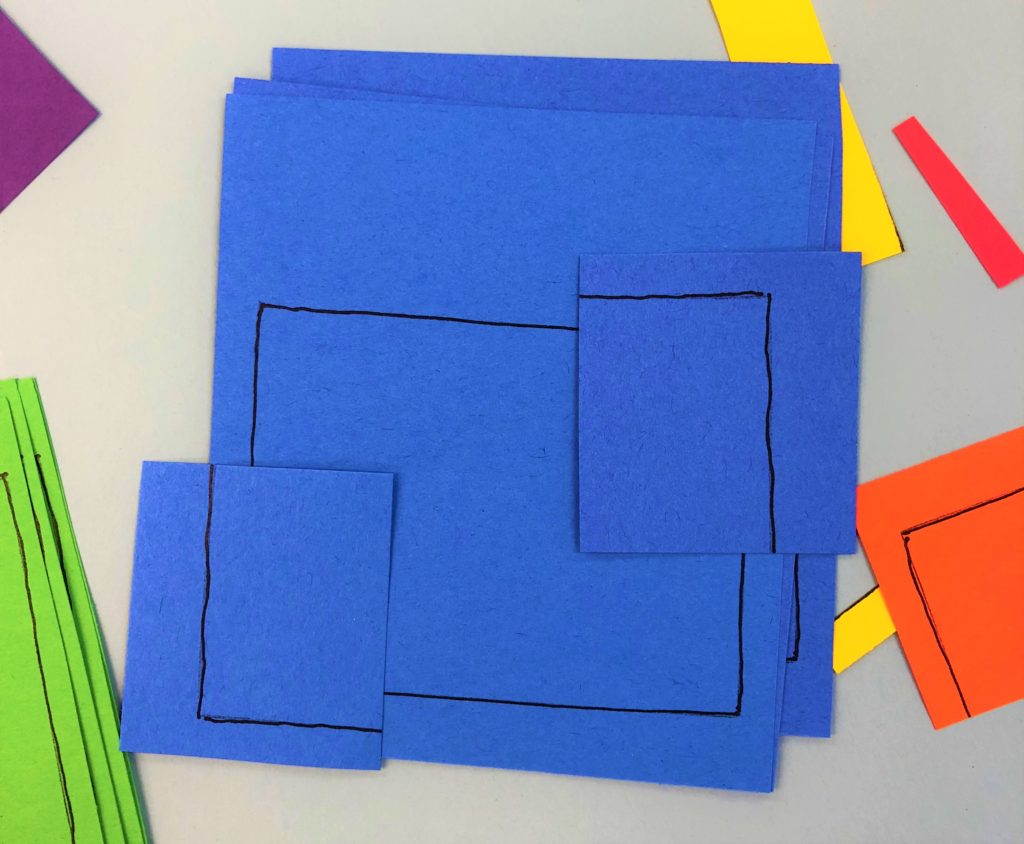
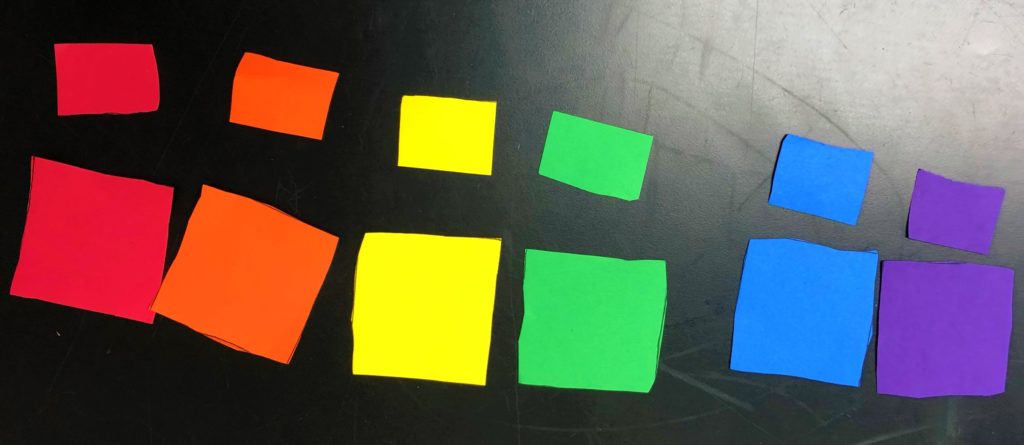
Have the students lay out their squares and rectangles on the table and discuss the rainbow order they are in. This will also help make sure none of them fell onto the ground.
Give each child a baggie with their name on it and put the paper in the bad until the next class period.
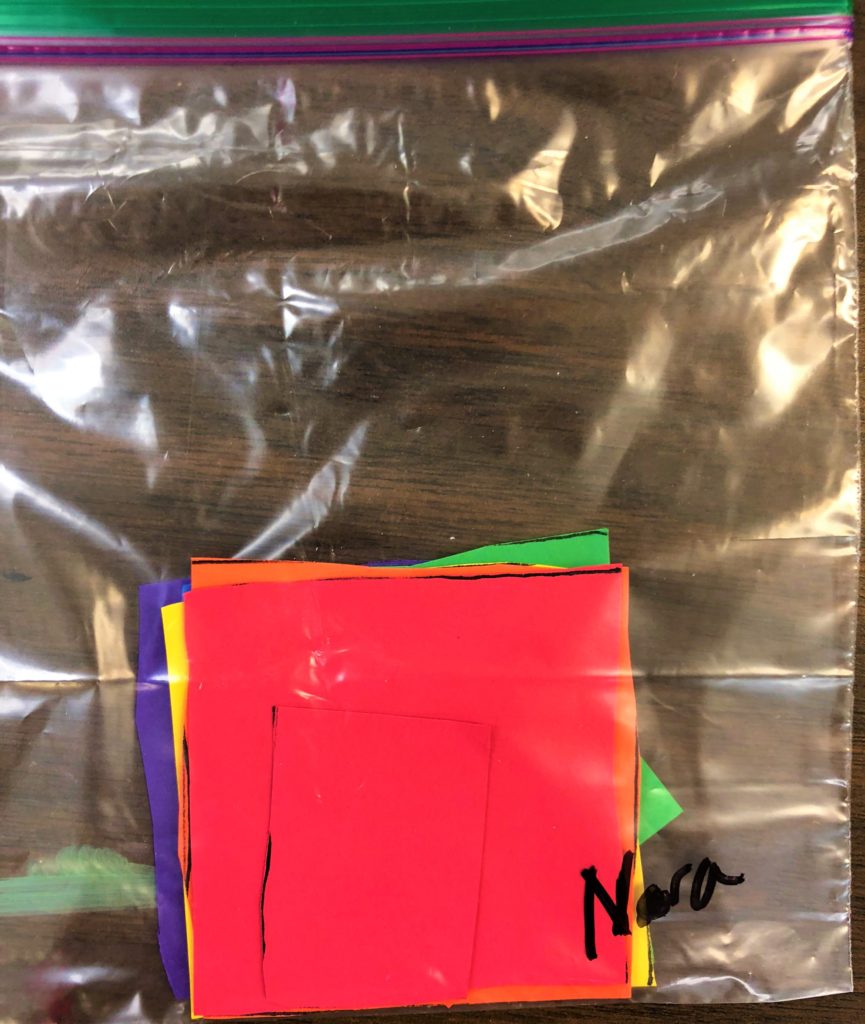
Day 5
Pre-draw circles onto a black piece of construction paper. They are approximately 2″ wide. Each child gets six circles. Once they are cut have them line everything up on the table. This time we put the little rectangles into the big squares. I used this opportunity to discuss which colors blend to make other colors. As you can see each color connects with the square it is in.

I hand back their large paper and they begin the gluing process. It is important to point out to this age group that the wheels need to touch the train AND the track. I did give directions about which way the train faced. While they glue, I walked around with a sharpie and had them put their first name on the front bottom corner.
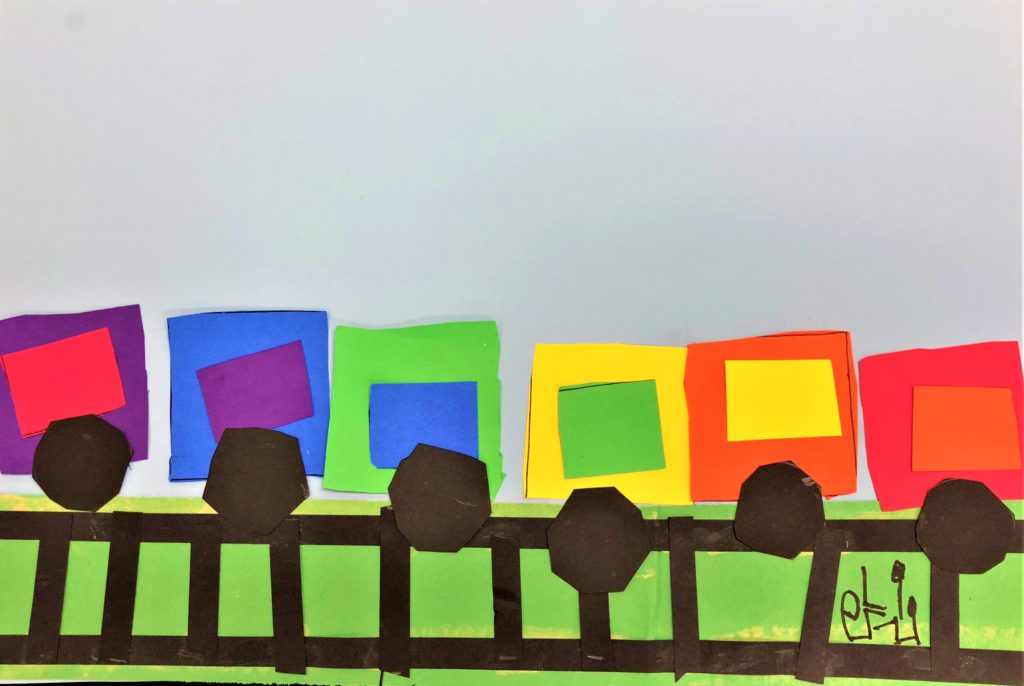
Day 6
Pre-cut 1.5″ Squares and cut them into triangles.
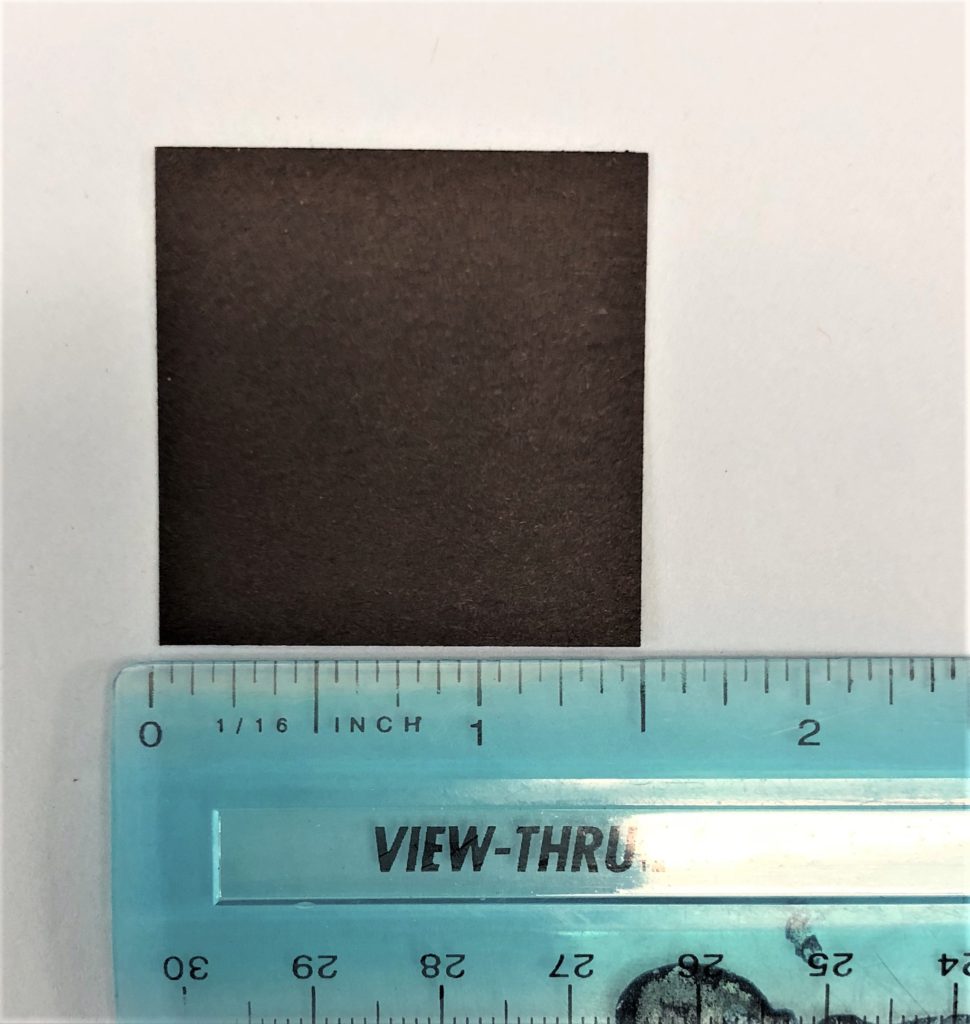
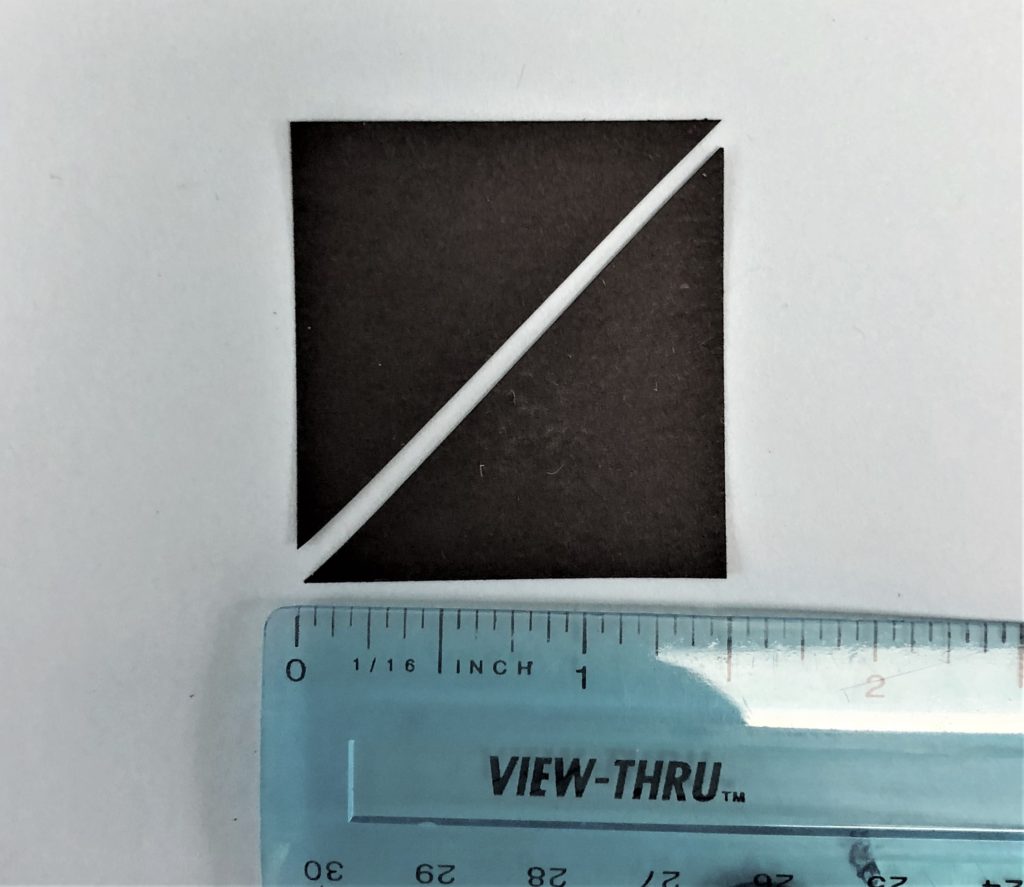
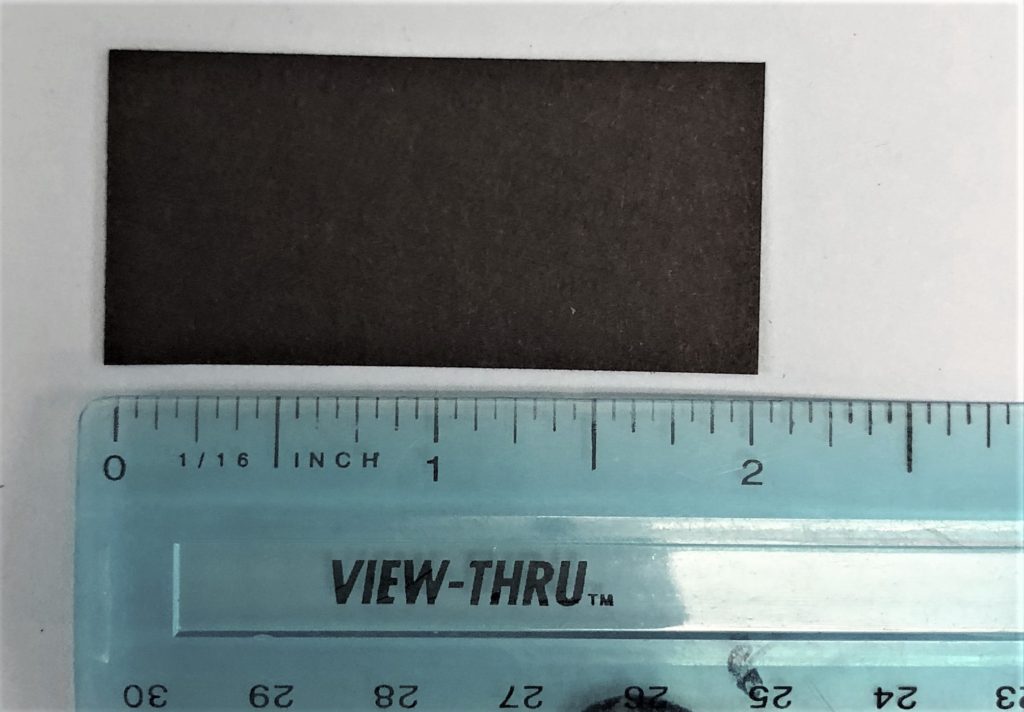
Also cut 1″x2″ rectangles.
These black pieces are for the front of the train engine.
Students are instructed to glue these on. Next, they color away using construction paper crayons! I encourage them to add smoke from their smoke stack, a sun, clouds, and animals or friends on their train.
Here are some finished Color Train Art Lesson pieces!
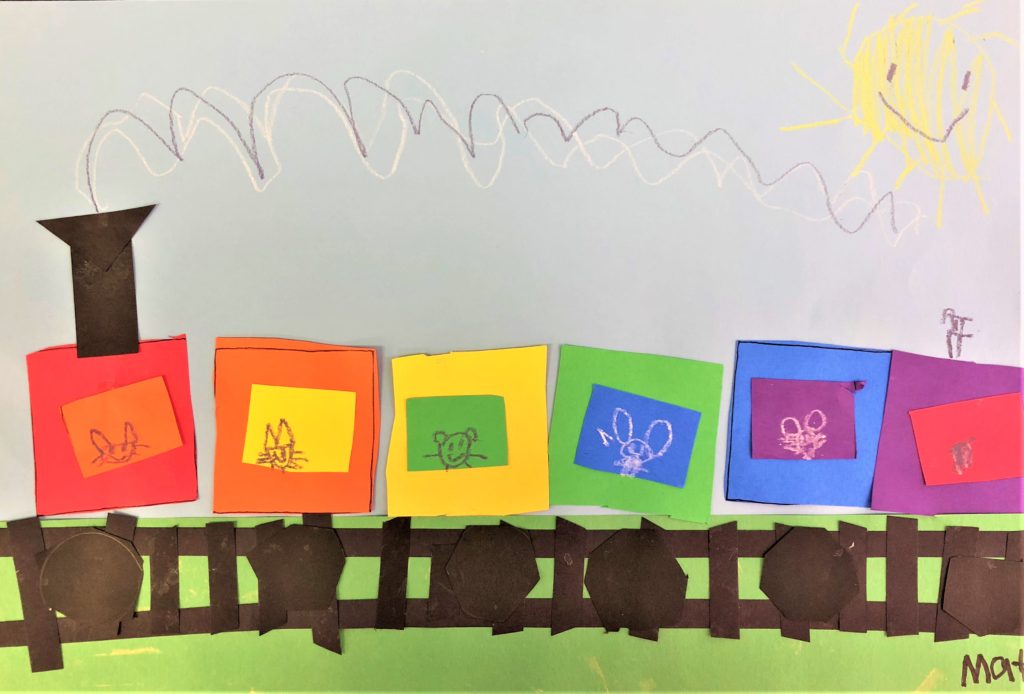


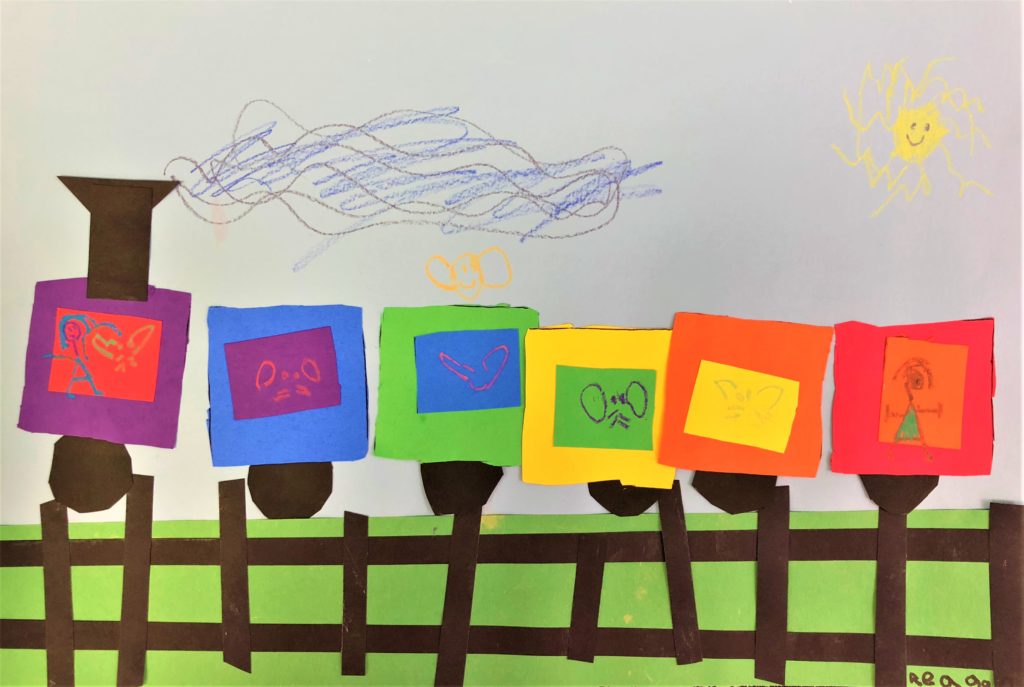

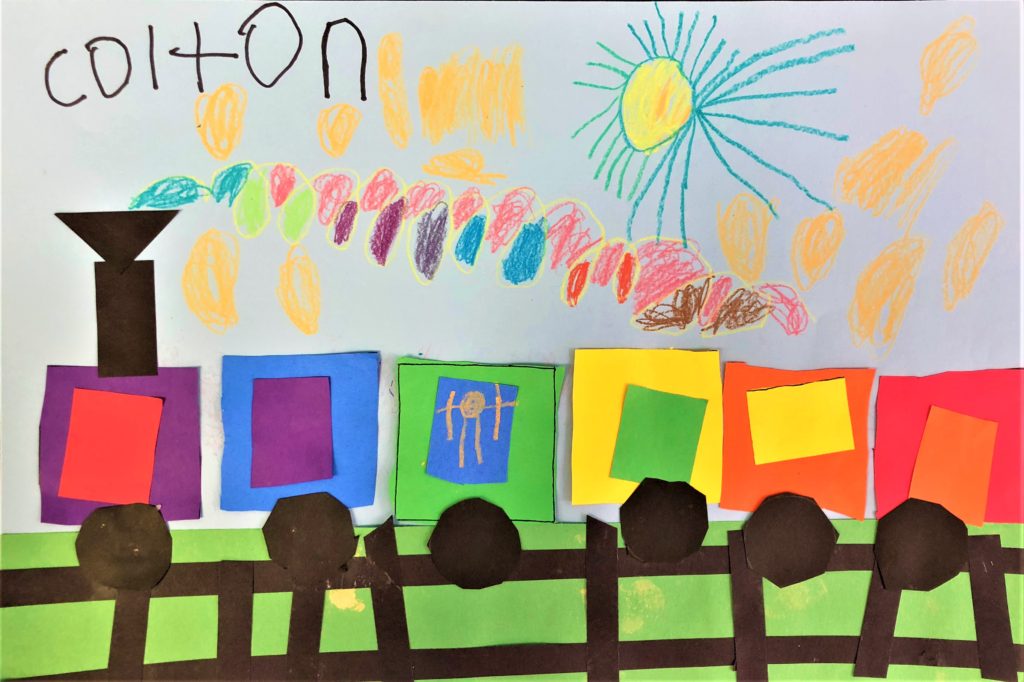
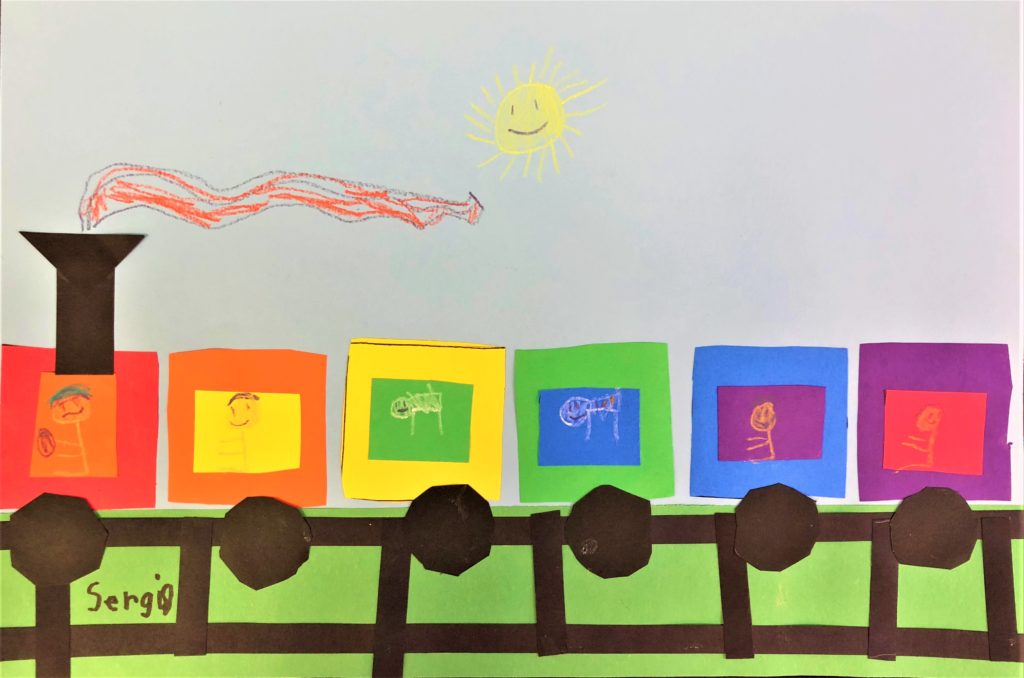
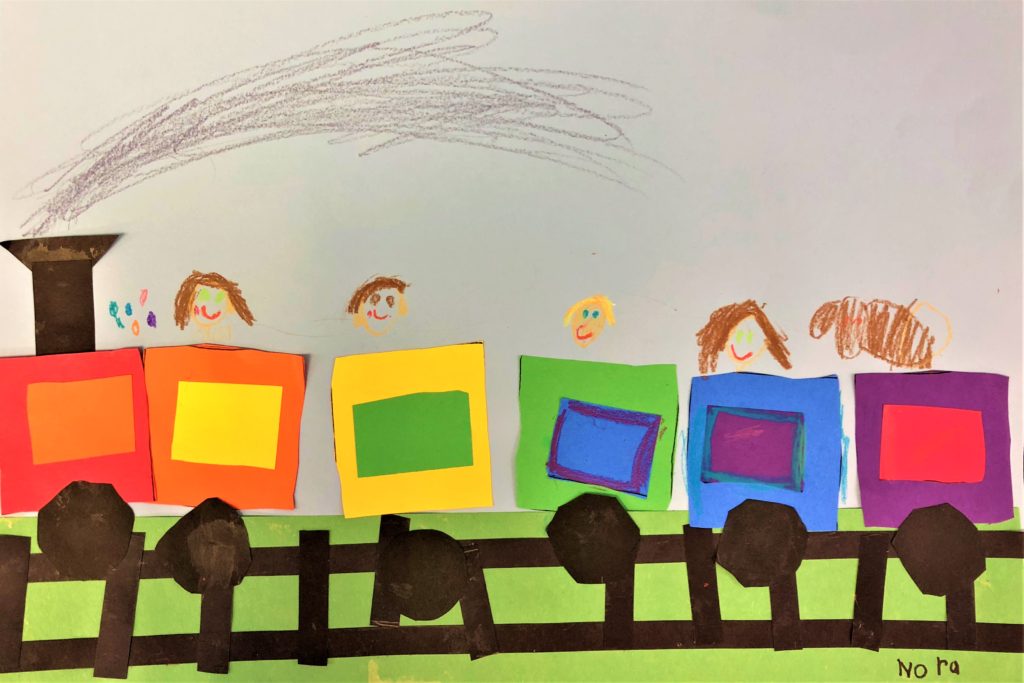

Common Core Standards
Kindergarten – Science – Investigation and Experimentation
- Scientific progress is made by asking meaningful questions and conducting careful investigations.
- Observe common objects by using the five senses.
- Describe the properties of common objects.
- Describe the relative position of objects by using one reference
- Compare and sort common objects by one physical attribute
- Communicate observations orally and through drawings.
Kindergarten – Math
Measure – Classify objects and count the number of objects in each category
- Classify objects into given categories; count the numbers of objects in each category and sort the categories by count.
Geometry – Identify and describe shapes
- Describe objects in the environment using names of shapes, and describe the relative positions of these objects using terms such as above, below, beside, in front of, behind, and next to.
- Correctly name shapes regardless of their orientations or overall size.
Geometry – Analyze, compare, create, and compose shapes
- Analyze and compare two- and three-dimensional shapes, in different sizes and orientations, using informal language to describe their similarities, differences, parts and other attributes
1st Grade – History – A Child’s Place in Time and Space
1.4 Students compare and contrast everyday life in different times and places around the world and recognize that some aspects of people, places, and things change over time while others stay the same.
- Study transportation methods of earlier days.





My kindergarten and first grade students are completing this project. I love the details and the discussion points. Thank you for your generosity! I really appreciate it and my class is creating a wonderful piece of art.